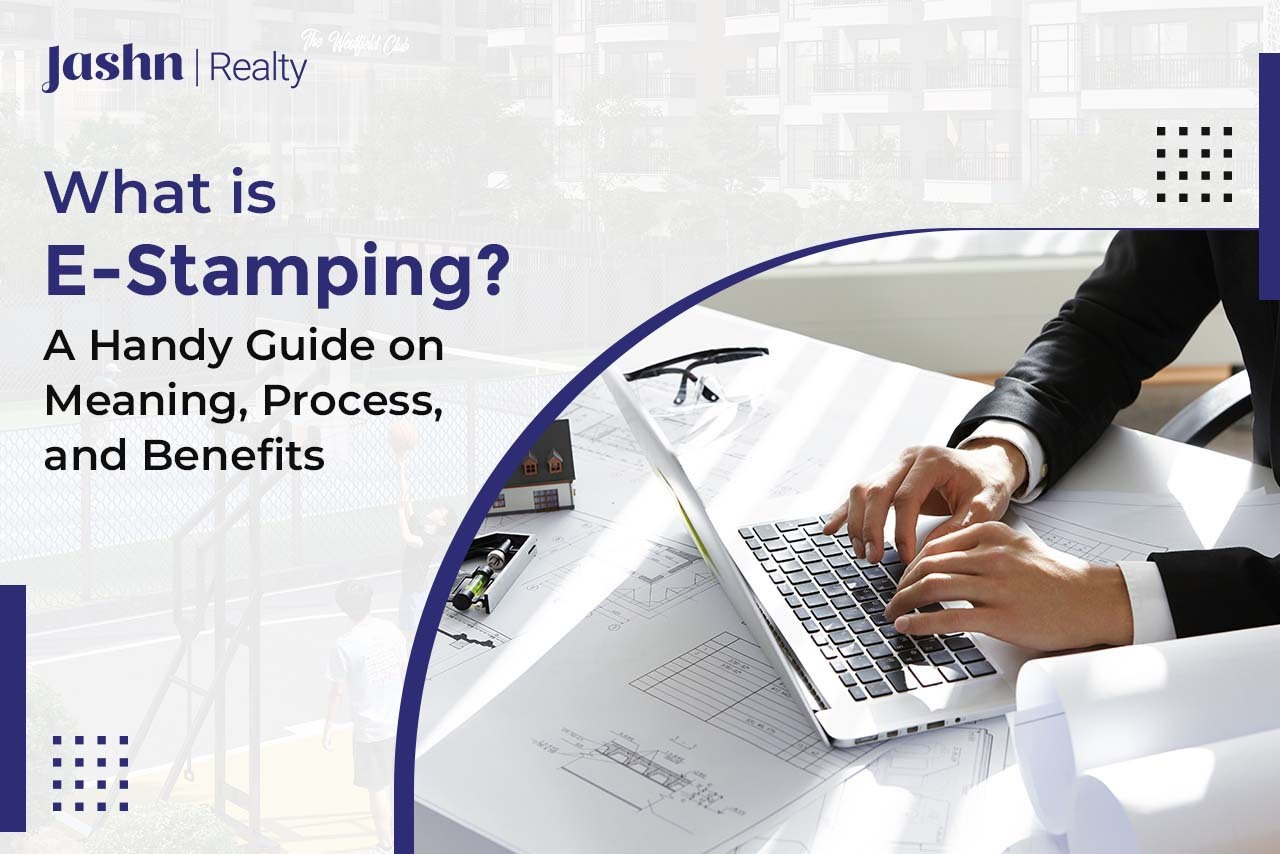Are you planning to buy a home in Lucknow? You need to be aware of every step involved in the home-buying process. One is the registration of the sale deed and all the other deeds required for ownership change. As as a buyer, you must bear the stamp duty charges payable to the state government via a sub-registrar’s office.
In Lucknow or any other state of India, stamp duty is paid through stamp papers. Homebuyers need to purchase stamp papers, and the value of the stamp paper depends on the transactional value of the property.
Earlier, stamp papers were purchased in hard copy (physical form), but now, e-stamping has replaced them.
What does E-stamping mean?
E-stamping means electronic stamping. In simple words, it is the digitised version of stamp duty payment. It encapsulates the modernisation of stamp papers. The digital counterpart has replaced the traditional paper version, providing relief to homebuyers.
In India, E-stamping has become an efficient system, streamlining the payment procedures and enhancing the security. Also, it has ensured no human errors.
When was the e-stamp paper launched in India?
E-stamping was launched in July 2013 by the Indian government. The system came into existence to prevent human errors and frauds. E-stamping was introduced in India through SHCIL (Stock Holding Corporation of India Limited, the Central Record Keeping Agency of the Indian government. SHCIL is the authorised to keep a track of the user registrations, administrations, and applications.
How to apply for an e-stamp
It’s easy to apply for an e-stamp online. Here’s how you can do it.
- Access the official website of SHCIL and get registered.
- Select and click the E-Stamp Services.
- Choose your state and proceed further. Remember stamp duty charges vary from one state to another.
- Fill the application form and click on download. Stamp duty under ₹501 is free to download.
- After download, get your stamp certificate.
How to pay for e-stamp duty online
Follow these steps to pay your stamp duty online.
- Access the SHCIL Log into your account. If you are not registered, click on “Register Now.”
- Enter the required details. Select a user ID, password, and security question.
- Enter your bank account details.
- Confirm the activation link on your registered email address. Now, you can access the services using your ID and password.
- Now, log into the SHCIL
- Select your state and then choose “Nearest SHCIL” branch. Enter the required details, for example, first party name, second party name, article number, stamp duty paid by, and stamp duty amount.
- As and when you submit the details, you get an online reference acknowledgement number of the amount payable via debit card, net banking, RTGS, NEFT, or FT.
- Take a print out of the acknowledgement slip and visit your nearest SHCIL branch. You can then take the hard copy of the e-stamp certificate from the branch.
P.S. The payer also needs to pay the payment gateway and bank charges.
How to verify e-stamp
Follow these steps to verify your e-stamp.
- Go to the homepage and click “Verify e-stamp.”
- Provide the details such as certificate number, state, issuance date, stamp duty type, and session ID.
- Once you’ve entered the details, click “Verify.”
You can also verify e-stamp using mobile phone or via manual process.
Benefits of E-stamping
Saves time:
E-stamping is a highly efficient method. You can generate e-stamp certificates in just a few minutes. It saves your valuable time.
Secure option:
Since e-stamp carries a unique identification number, it rules out the probability of unauthorised tampering.
Flexibility:
Since an e-stamp doesn’t have specific denominations, it’s easy to use and provides room for additional flexibilities.
Easy to verify:
You can use the inquiry option to check the authenticity of an electronic stamp certificate.
Physical visits required for refund:
When an e-stamp is cancelled, the payer can get the refund but in one condition if they visit the SHCIL office.
Conclusion
E-stamping has transformed the way non-judicial stamp duty is paid in India. It is now a more secure, convenient, and hassle-free process. It not only prevents unauthorised tampering but also saves time. The government of India launched e-stamping in July, 2013.



